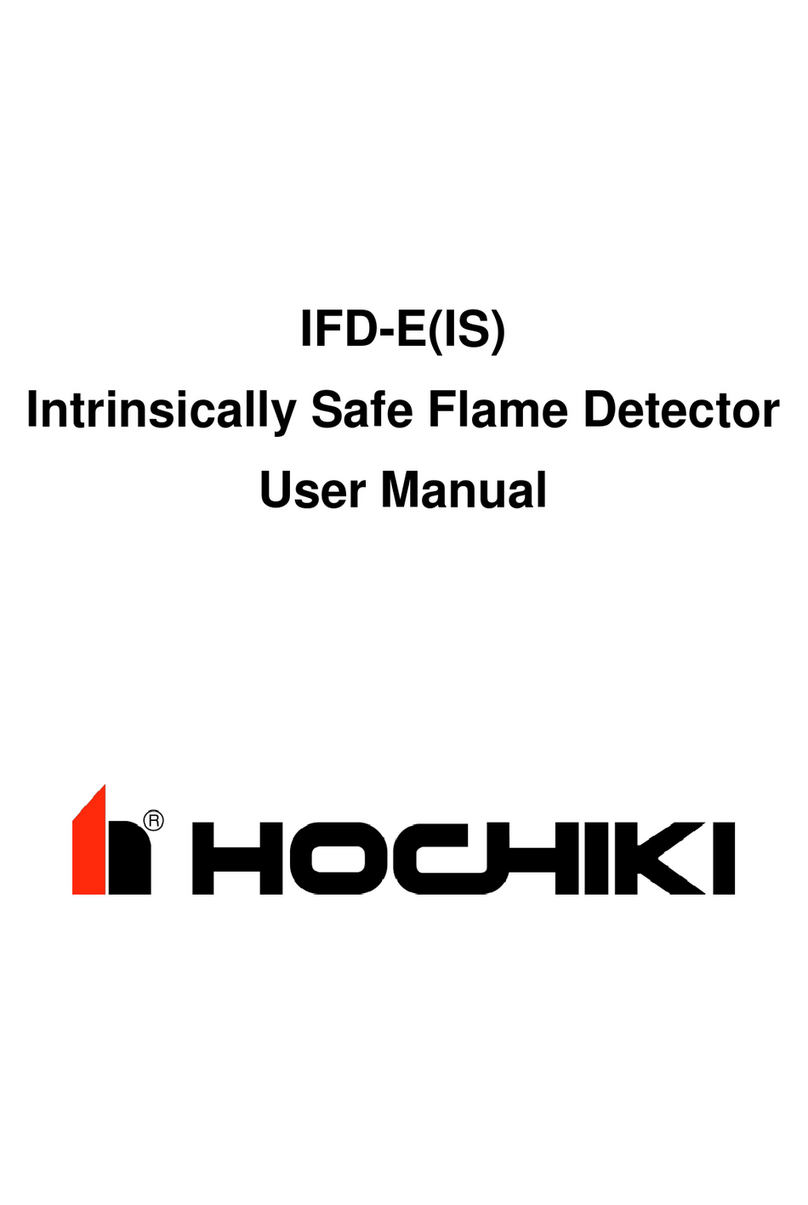
HCA Series Installation Manual Page 2 of 58 V2.15
Table of Contents
1. Introduction .................................................................................................................. 4
1.1
Product Features.................................................................................................................4
1.2
Electrical Specifications........................................................................................................5
1.3
Fire Alarm System Limitations ..............................................................................................6
1.4
Installation Precautions .......................................................................................................7
2. Controls and Indicators .................................................................................................. 9
2.1
Front Panel User Control Buttons .........................................................................................9
2.2
LED Indicators: ...................................................................................................................9
2.3
Local Piezoelectric (PZT) Sounder: .....................................................................................10
3. Control Panel Installation...............................................................................................11
3.1
Agency Requirements........................................................................................................11
3.2
Requirements for All Installations.......................................................................................11
3.3
Calculating Current Draw and Battery Size ..........................................................................12
3.3.1 Maximum Battery Standby Load ...........................................................................................13
3.3.2 Calculating Maximum Current Draw & Battery Backup Requirements.................................13
3.4
Mounting the Enclosure .....................................................................................................15
3.5
AC Power Connection ........................................................................................................15
3.6
Battery Installation............................................................................................................16
3.7
NAC Output Circuit Installation ..........................................................................................17
3.8
Zone Installation ...............................................................................................................18
3.9
Inner Door Label (Wiring Diagram) ....................................................................................19
3.10
Relay Outputs ...................................................................................................................20
3.11
DACT Phone Lines.............................................................................................................21
3.12
Remote Annunciator (Model HCA-RA).................................................................................22
3.12.1 HCA-RA Installation..........................................................................................................22
3.12.2 HCA-RA Specifications.....................................................................................................23
3.13
Diagnostic LEDs ................................................................................................................24
4. Control Panel Operations ...............................................................................................25
4.1
LCD Display Screens..........................................................................................................25
4.1.1 Initial Display Screen after System Initialization and Panel Revision ...................................25
4.1.2 System Normal Status Screen ..............................................................................................26
4.1.3 Off Normal System Status Screens and Sounds ..................................................................26
4.1.4 Zone Alarm and/or Trouble Screens.....................................................................................26
4.1.5 System TROUBLE Screens ..................................................................................................26
4.1.6 NAC Output Trouble Screens................................................................................................27
4.1.7 Multiple Trouble Screens.......................................................................................................27
4.1.8 Active Alarms and Trouble Screens......................................................................................27
4.2
Operation Keys .................................................................................................................28
4.2.1 System Reset........................................................................................................................28
4.2.2 System Silence......................................................................................................................28
4.2.3 System Acknowledge............................................................................................................28
4.3
Login Screen.....................................................................................................................28
4.3.1 Default Access Codes...........................................................................................................28
4.4
User Top Level Menu Options ............................................................................................28
4.5
Installer Top Level Menu Options .......................................................................................29
4.6
Fire Drill ...........................................................................................................................30
4.7
Date/Time Setup...............................................................................................................30
4.8
Walk Test .........................................................................................................................31
4.9
Event History ....................................................................................................................31
4.9.1 Viewing Event History ...........................................................................................................31
4.9.2 Clearing Event History...........................................................................................................32
4.10
Disabling Circuits ..............................................................................................................32

































